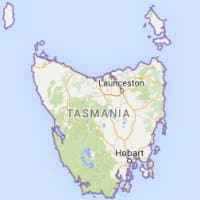The Basslink interconnector between Tasmania and Victoria returned to service around midday on Monday. It’s been nearly 6 months since an unspecified fault took it out of action and plunged the Apple Isle into an energy crisis; made worse by lack of rainfall.
It’s been a case of feast or famine for Tassie in relation to electricity.
The good news came just a week after flooding rains helped replenished overall hydro storage that had fallen to an unsettling level. The level is now sitting at 27.1 percent, with more significant rain expected given the time of year.
Even the recent rain was a double-edged sword, with lives lost and a flood damage bill expected to top $100 million.
The Basslink fault point was identified at 90.467 km from the Tasmanian coastline, but the cause of the fault is still yet to be determined.
Tasmania began exporting electricity at about a fifth of Basslink’s maximum capacity immediately after it was reactivated. According to Basslink, the interconnector is rated to transmit 500 megawatts on a continuous basis in either direction and up to 630MW export from Tasmania for limited durations.
The expensive, polluting diesel generators that helped pull the Apple Isle through the energy crisis have fallen silent. The 100+ diesel generators used cost $44 million to lease and $11 million per 100 megawatt hours of electricity generation per month. A final costing is yet to be released.
With the major threats to energy security perhaps now in the rear view mirror; there can be a more focused period of reflection to determine how to avoid another incident in the future.
More non-hydro renewables are an obvious answer and there’s also increasing appetite for a second Basslink-type cable.
Tasmanian Senator Lisa Singh believes a second cable would stimulate investment in renewable energy projects and also provide significant opportunities for the manufacture of wind and solar power components.
“I still believe Tasmania can become the powerhouse of renewable energy in Australia,” Senator Singh said.
”If we want to push renewables, it’s an opportunity to provide those policy settings so manufacturing can become a live possibility”.
The prospect of a feasibility study relating to a second interconnector spanning Bass Strait appears to have bipartisan support.












































